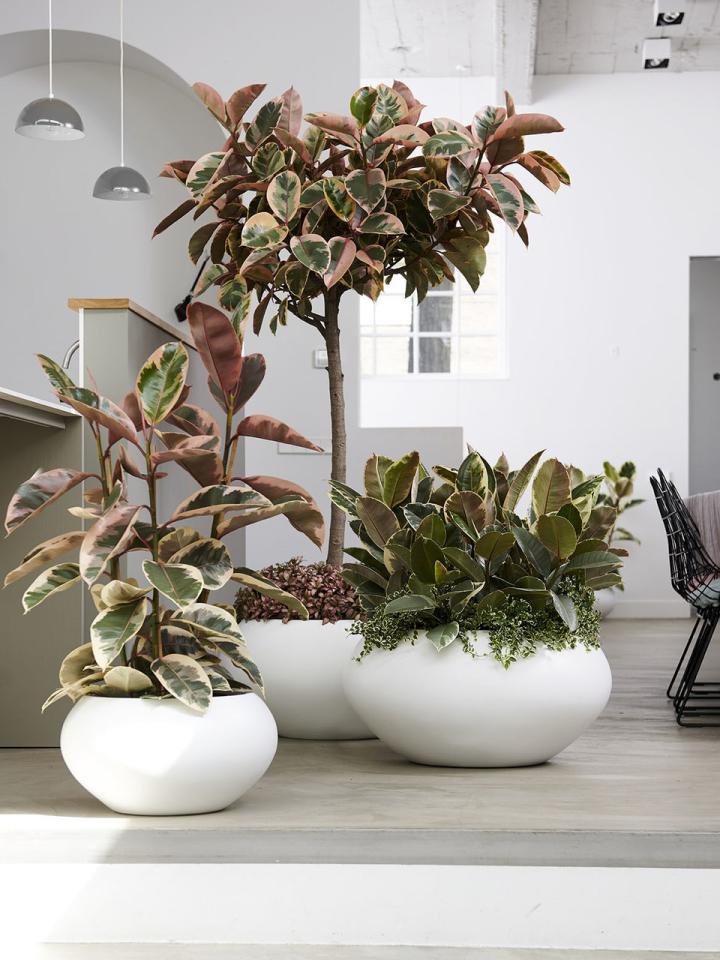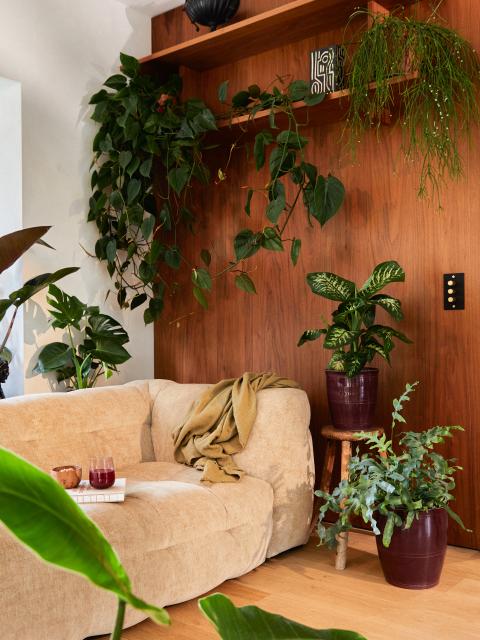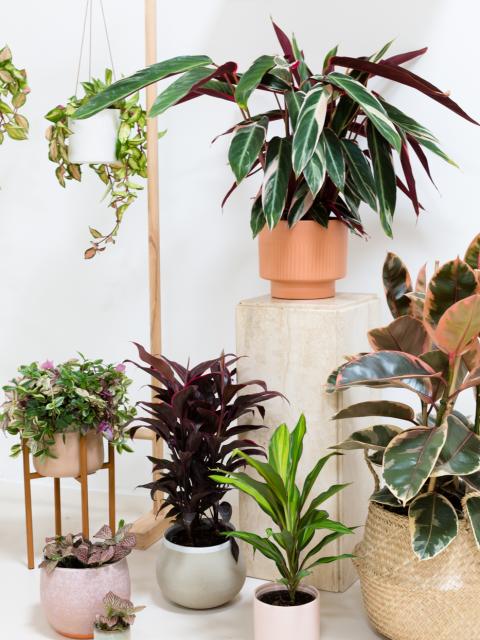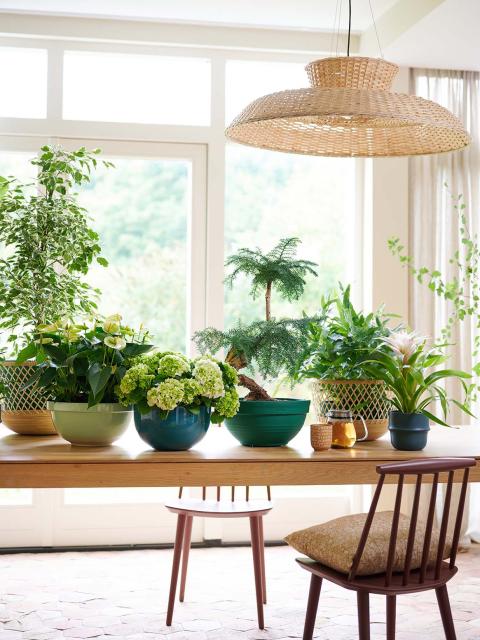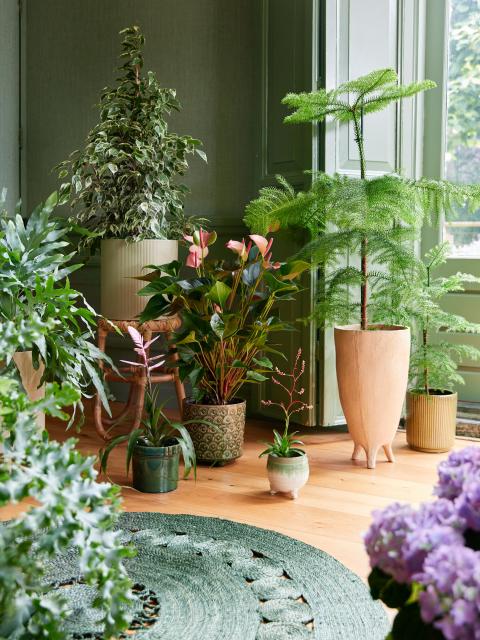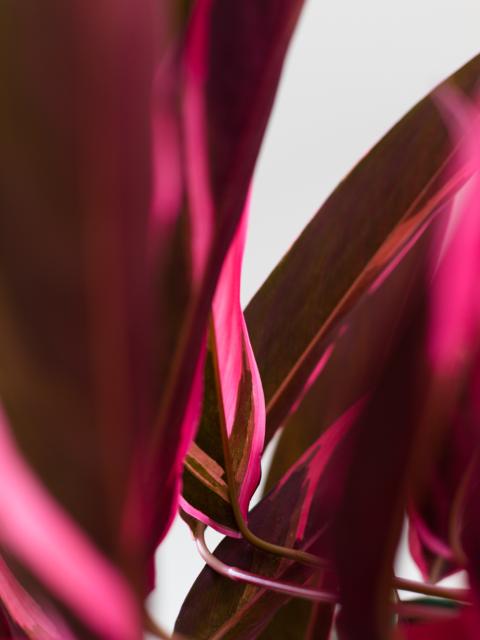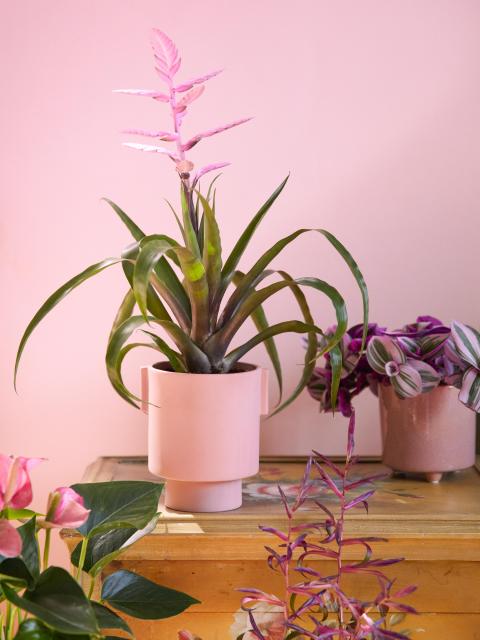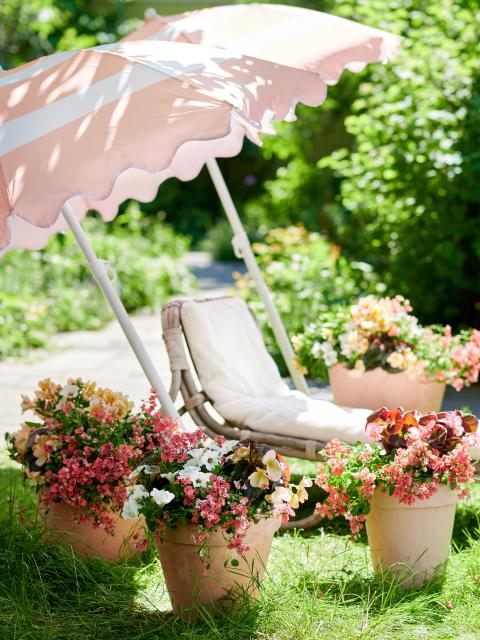Colours and shapes
Lavishly endowed with leaves, available in sizes from a mini shrub to an indoor tree, and also easy to look after. It’s no wonder that Ficus is such a popular houseplant. You can choose from specimens with small leaves like the weeping fig (Ficus benjamina), medium leaves Ficus elastica or with long narrow leaves like Ficus binnendijkii, or with massive leaves like the fiddle leaf fig (Ficus lyrata). Ficuses with medium to XL leaves are Ficus cyathistipula and the rubber plant with its stylised oval leaves. There is also a tiddler: the climbing fig (Ficus pumila) compensates for its somewhat modest stature with a talent for climbing and hanging. Within most species there is also a choice between plain and variegated leaves and trunks that can be straight, woven or twisted. So there is a Ficus to suit every style of interior. It’s also strong plant that keeps on growing and remains beautiful for an impressively long time if looked after correctly.
Symbolism
In the tropics the Ficus is considered to be a holy tree: the Buddha is said to have found spiritual enlightenment beneath a Ficus religiosa. The same species represents the ‘tree of the world’ in Hinduism, and in Christianity the Ficus' fig leaves were very useful for Adam and Eve to cover themselves when they had eaten from the tree of knowledge. The aerial roots of the weeping fig (Waringin) represent a link between the human world and the world of the spirits. The meaning can vary according to the species, but they almost all have ‘abundance’ and ‘spiritual wealth’ in common.
Origin
Ficus is the botanical name of a genus within the mulberry family which includes some 750 species. Most grow in tropical regions where their fruit (figs) form an important source of food for humans and animals. The plant also does well in the mild climate around the Mediterranean. According to archaeological findings the first tree was cultivated for agriculture in the Middle East some 11,000 years ago. The fruit was eaten, the rubber tree provided latex, and the fibres from the pliable bark were used to make fabrics and boxes, amongst other things.

